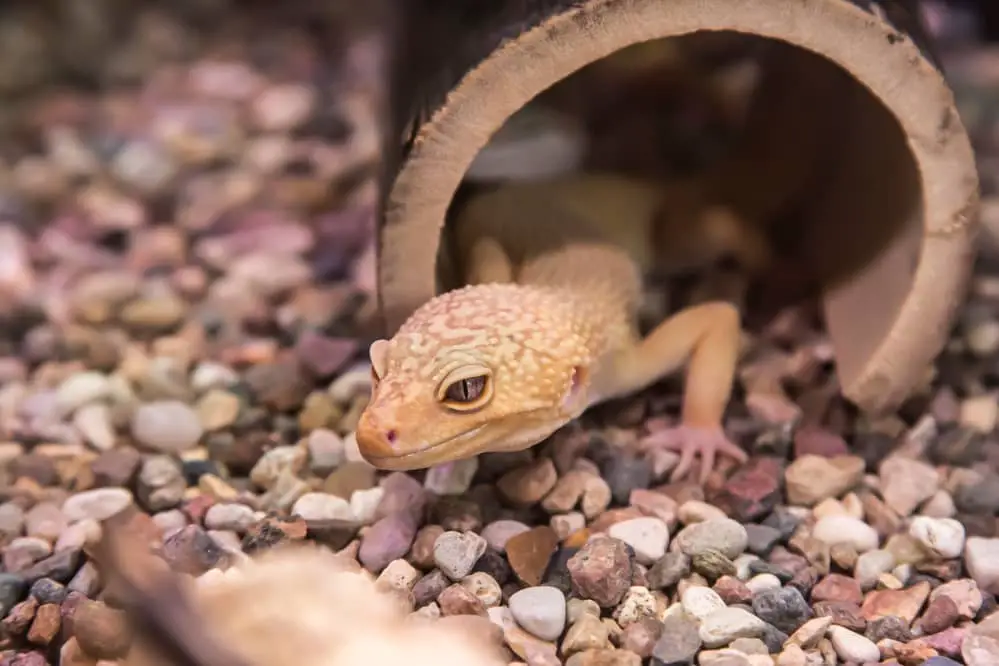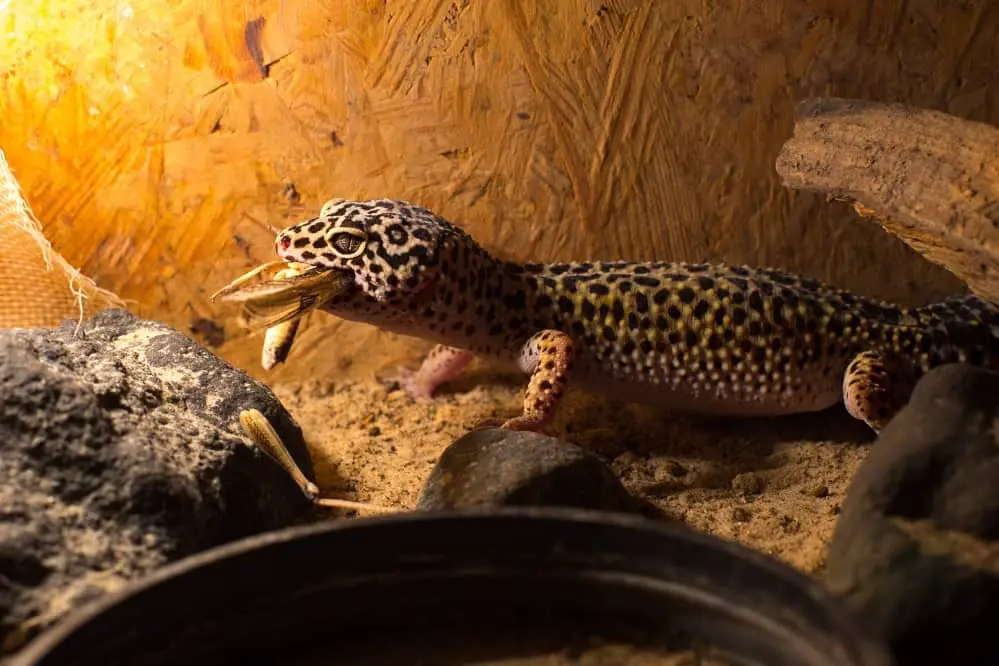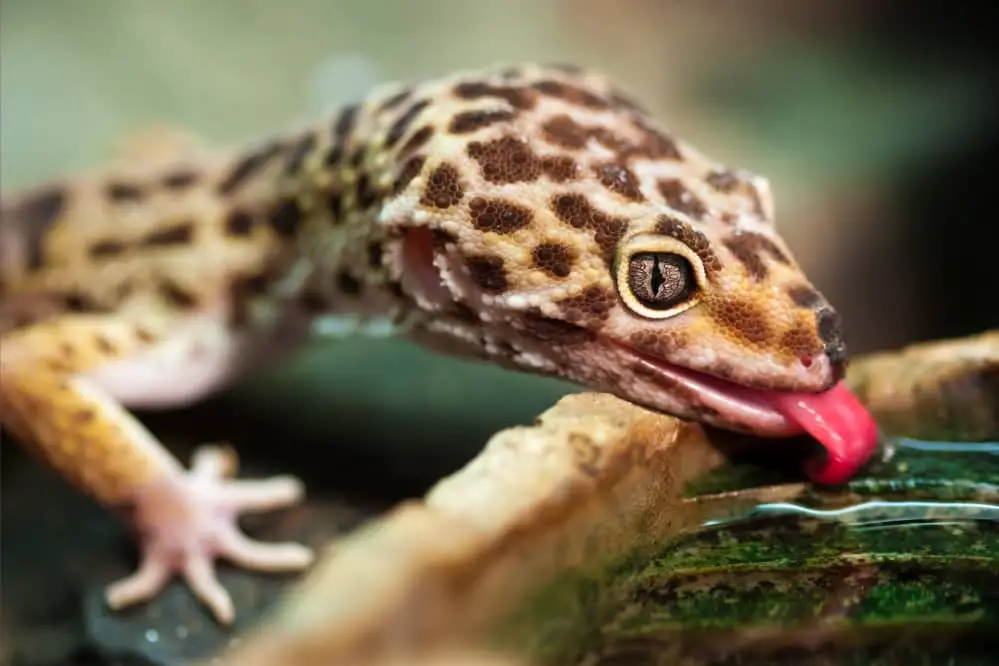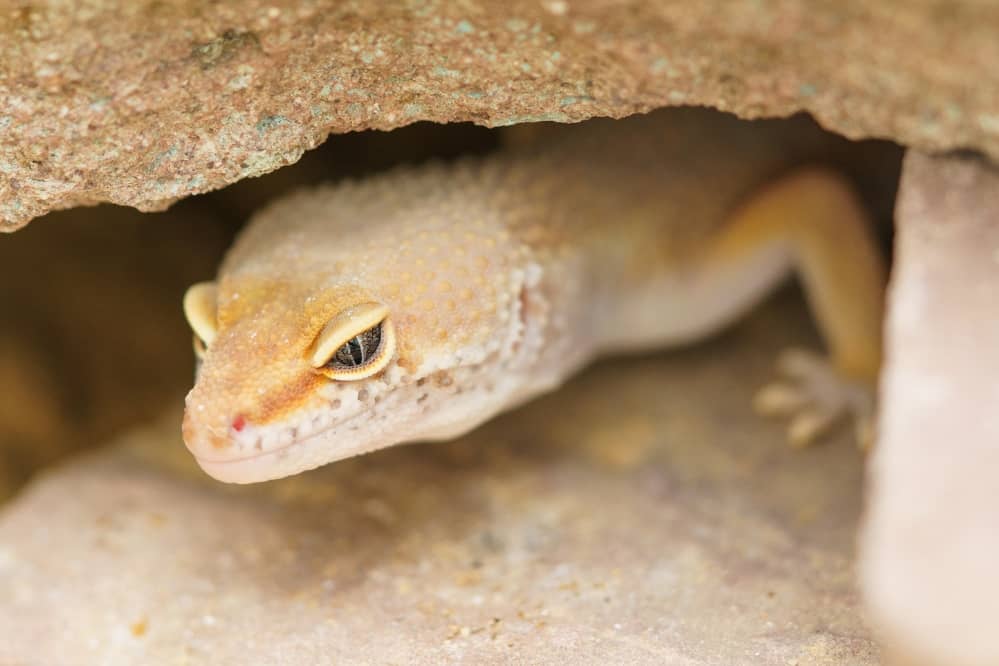Among all the reptile species, leopard geckos are the most popular species, especially among the new reptile fanciers who don’t have experience keeping a reptile previously. This is so because the leopard geckos are relatively small in size, docile, and easy to handle in terms of feeding and maintenance needs.
Since these reptiles are comparatively easy to keep and maintain, it doesn’t mean that you should adopt a leopard gecko without knowing the basics about their feeding, maintenance, and environmental requirements.
Of all the things that any new reptile owner needs to know, “brumation” is the most crucial aspect. So the objective of this post is to discuss “leopard gecko brumation” in detail and help reptile fanciers understand “what is brumation,” “Why do leopard geckos brumate” “Do leopard geckos really need to brumate or is it necessary for leopard geckos to brumate” “How long can leopard geckos brumate” and “how you can help your leopard gecko to go through brumation smoothly and safely.” So let’s begin.
Understanding Brumation (What Is It?)
The word “brumation” may be new for most novice reptile lovers; however, most of us are familiar with the word “hibernation.” So in simple words, we can use the word brumation as a synonym for hibernation when talking about reptiles, although there is a slight difference between the two states. Let’s first see what brumation actually is?
Brumation is actually a state of dormancy and prolonged sleep that leopard geckos (and other reptiles) experience during winter. The objective of brumation is to minimize food and energy requirements and conserve energy by limiting physical activity, lowering the body’s metabolic functions, by spending most of their time sleeping. So in the case of leopard geckos (or other reptiles), this process of sleeping for an extended period of time without eating, drinking, or engaging in other routine physical activities is known as brumation. Naturally, wild leopard geckos brumate during the winter only for two reasons;
- First, the insects are not available in abundance.
- Second, the environmental temperature falls too low, and it becomes difficult for leopard geckos to get enough heat necessary for their survival.
So they brumate to minimize their food and heat requirements until the winter ends.
Is Brumation Necessary For Leopard Geckos?
No, brumation has nothing to do with the leopard gecko’s survival, nor an integral part of his routine life. It has been observed that leopard geckos brumate only in those areas where temperatures fall significantly during winter. In the areas where the temperature doesn’t drop significantly, these lizards don’t enter the brumation cycle. Similarly, leopard geckos thrive well for years without brumating in captivity because in captivity, the temperature is well maintained, and they never experience food shortage.
However, some reptile breeders artificially induce brumation for a short duration to prepare their leopard geckos for breeding and successful pairing. Again it may be helpful to brumate leopard geckos before breeding for proper mating and to ensure the health of the mother and hatchlings, but it’s not necessary. It has been observed that many breeders successfully breed their leopard geckos without inducing brumation.
However, you should keep in mind that although it is not necessary and leopard geckos in captivity rarely brumate, brumation is a sensitive phase of their life. So if your pet leopard gecko is preparing for brumation (or you intentionally want to induce brumation), he certainly needs your help to pass through this phase smoothly. So you must learn how to handle a leopard gecko during this delicate phase.
How Long Generally A Leopard Gecko Brumate?
It’s difficult to mention a particular number of days, weeks, or months a leopard gecko may brumate. Because as we have discussed earlier, leopard geckos generally brumate during winter when the environmental temperature falls below a particular point. Since brumation is linked with the winter season, so how long a leopard gecko may brumate depends on how long the winter season lasts in that particular area. In addition, most leopard geckos brumate once a year; however, some may brumate 2-3 times a year, depending on the type of habitat, environmental conditions, and their health status.
However, in captivity, you can manipulate the brumation duration to make your leopard gecko end brumation and return to normal life by restoring the original temperature and day length.
Signs Your Leopard Gecko Is In Brumation
Leopard geckos generally reduce their feed intake 3 – 4 weeks before the actual brumation begins. In addition to lack of appetite, if your leopard gecko is lethargic, reluctant to move, uninterested in his surrounding, not pooping or pooping less frequently, and spend most of his time lying idle in his hide, it clearly indicates that brumation is imminent.

However, you must keep in mind that all these signs are also present when a leopard gecko is stressed or sick. So it’s crucial to observe things closely to ensure whether your reptile is actually preparing to brumate or sick. If it’s not winter season or the temperature inside the cabin is on the higher side, then the presence of these signs may signal a disease or stress.
Helping Your Leopard gecko To Brumate Safely & Smoothly
Though with the passage of time, reptile owners learn the methods and techniques to make their leopard gecko go through the brumation smoothly, safely, and successfully, new reptile owners may find this situation confusing, and they may wonder what they should do. So, for novice reptile owners, who are experiencing brumation for the first time, we have given some valuable tips below.
1. Visit Vet Clinic
If you want to induce brumation (or your leopard gecko is showing initial signs of brumation), it is crucial to visit your vet’s clinic for a general health status assessment of your leopard gecko. The vet will check for any underlying illness, parasites, and fat reserves. A leopard gecko suffering from any underlying disease, having a parasitic infestation, or not having enough fat reserves, should not be allowed to enter the brumation cycle.
2. Talk To Experienced Owners
Before inducing brumation for the first time, try to find some experienced reptile owners and talk to them about “how to manage a leopard gecko during brumation.” Seasoned reptile owners will tell you a lot of useful, practical tips and tricks, and things will become a lot easier for you.
3. Dedicated Place For Brumation
You should pre-decide a place where you will keep your leopard gecko during brumation. The place should be cooler, distraction free, and away from sun light. For this purpose, you can shift the whole enclosure of your leopard gecko to a comparatively cooler and quiet corner of your house.
4. Stop Offering Food

You should stop offering food to your leopard gecko at least ten days before actual brumation begins. It’s necessary because during brumation, the metabolism of leopard gecko’s body is very slow, and it can’t digest food. If food stays in the gut for a long, it can rot, leading to severe infection. Even it’s better to give a warm bath to your pet reptile to help him defecate and get his gut emptied.
5. Reduces Temperature And Day Length
If your leopard gecko is healthy and off-feed for the last 10 to 14 days and you have shifted their enclosure to the desired brumation place, it’s time to reduce to temperature and day length to induce brumation. The desired temperature and day length during brumation is 610F- 690F and 10 hours, respectively. Though some breeders are Ok with suddenly reducing the temperature and day length, it is better to do it gradually.
6. Place The Water And Calcium Supplement Inside Their Enclosure
Sleeping leopard geckos don’t need anything to eat or drink, but they may wake for a short duration to drink water. So make sure that fresh water is available all the time. In addition, also place calcium supplements inside their enclosure; they may eat a bit if they need.
7. Monitor Your Leopard Gecko Weight and Environment Regularly
While brumating, you should weigh your leopard gecko once a week to determine how quickly he is losing weight. The weight loss should be lower than 10% of his pre-brumation weight. If the figure touches 10%, it’s an alarming sign, and you need to contact your vet.
Similarly, you should keep an eye on the vivarium’s internal temperature and check the temperature twice daily. Because if the internal temperature of the vivarium rises, it can make your leopard gecko end brumation before time.
How To Help A Leopard Geckos To Get Out Of Brumation?
Once the 1-3 month brumation period is over, begin increasing the temperature and day length gradually (sudden increase is not recommended). This will help your leopard gecko to awake and return to normal life. However, they may not eat for a week or two. So only offer fresh, clean water initially. They may appear slightly shaky for the first few days and will start eating normally within 10-14 days.

In addition, once your leopard gecko starts eating, try to feed him fatty insects more. You can also feed your leopard gecko a bit more than the usual amount to restore his fat reserves that generally depletes during the brumation.
Final Thoughts
It’s natural and perfectly normal for a leopard gecko to undergo brumation, but it is not necessary for its survival. Leopard gecko generally undergo brumation to avoid the harsh winter season (low temperature and lack of food). However, in areas where the temperature doesn’t fall significantly, leopard geckos don’t brumate. Similarly, if you are maintaining the tank’s temperature well and providing them enough food and water, your pet leopard gecko may not brumate at all. However, if you want them to brumate, the information provided above will be helpful for you to carry out the process correctly and smoothly.

